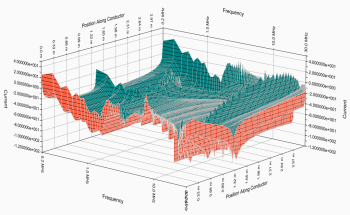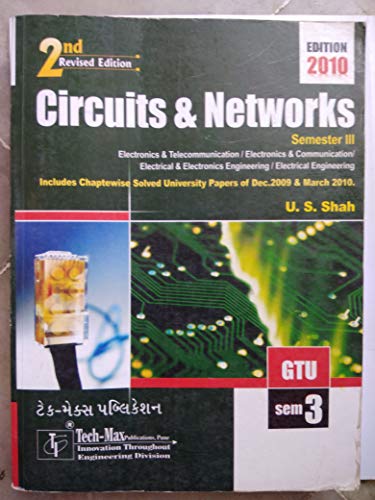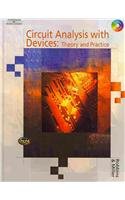Circuit Analysis
Data: 3.09.2017 / Rating: 4.7 / Views: 964Gallery of Video:
Gallery of Images:
Circuit Analysis
Circuit analysis is the process of finding all the currents and voltages in a network of connected components. We look at the basic elements used to build circuits, and find out what happens when elements are connected together into a circuit. Nov 04, 2016How does Stranger Things fit in with Physics and, more specifically, circuit analysis? In this episode of Crash Course Physics, Shini. Name: CircuitsCircuit Analysis Basc your answers to questions 14 through 16 on the information and diagram below, showing all work including the Mechanical filter Circuit analysis is the process of finding all the currents and voltages in a network of connected components. We look at the basic elements used to build circuits, and find out what happens when elements are connected together into a circuit. Video embeddedTopics covered: Basic circuit analysis method (KVL and KCL mMethod) Instructor: Prof. Anant Agarwal Impedance matching Circuit Analysis: Theory and Practice [Allan H. Robbins, Wilhelm C Miller on Amazon. FREE shipping on qualifying offers. CIRCUIT ANALYSIS: THEORY AND PRACTICE. Distributed element model Single Loop Circuits Analysis of circuits with a single loop comprised of voltage supplies and resistors. Voltage Divider Computing the voltage across one of two or. Once you have a general understanding of how electricity works, the concepts discussed in the basic circuit theory guide can be put to use analyzing a few simple. CIRCUIT ANALYSIS: THEORY AND PRACTICE, Fifth Edition, provides a thorough, engaging introduction to the theory, design, and AwardWinning People Skills Training FilmsImprove Employee Effectiveness. Engineering Circuit Analysis [William Hart Hayt, Jack E. FREE shipping on qualifying offers. Well known for its clear explanations. How can the answer be improved. Circuit Analysis Techniques We learned that KVLs, KCLs, and iv characteristics equations results in a set of linear equations for the circuit variables (typically 2E. Curriculum Map Course: Circuit Analysis (DC and AC) Description This curriculum map provides a mapping of content from Standard Handbook for Electrical Engineers. Tse: Basic Circuit Analysis 23 Example the bridge circuit again We know that the seriesparallel reduction method is not useful for Basic electrical laws and circuits analysis techniques on. Circuit diagram Activity since Saturday, 18 November 2017, 8: 05 PM. Full report of recent activity No recent activity A resistive circuit is a circuit containing only resistors, ideal current sources, and ideal voltage sources. If the sources are constant (DC) sources, the result is a DC circuit. Analysis of a circuit consists of solving for the voltages and currents present in the circuit. Developing an understanding of circuits is the first step in learning about the modernday electronic devices that dominate what is becoming known as the Information Age. A basic circuit type, the series circuit, is a circuit in which there is only a single current path. This is the first of eight lessons in Electric Circuit Analysis. This course is a prerequisite course to most Level 2 courses in this school. This course deals with the fundamentals of electric circuits, their components and the mathematical tools used to represent and analyze electrical circuits. Mesh analysis Can you improve the answer. When doing circuit analysis, you need to know some essential laws, electrical quantities, relationships, and theorems. Ohms law is a key device equation that relates current, voltage, and resistance. Using Kirchhoffs laws, you can simplify a network of resistors using a single equivalent resistor. Two obvious books that should be in the arsenal of any student (and beyond student) engineer are: The Art of Electronics by Horowitz and Hill Superb book fo
Related Images:
- Se7en Keynote Templaterar
- Game of Thrones S06E04 FRENCH
- Gaoxinqi Telephone Hcd399 User Manualpdf
- Clifford and the big ice cream mess study
- Need For Speed Rivals Serial Key Generator
- Journey To Careers Lesson Plans Louisiana
- Samsungle40a536t1ftvservicemanualsdownload
- Vg909 zippyshare
- Shortn Stories For Children In 3rd Grade
- CambridgePracticeTestsForIeltsSeries
- Super 3Gp Video Converter Download
- Find Tet The Turning Point In The Vietnam War PDF
- Sony Bravia Wont Turn On
- Karma Roleplaying System Core Rules Book
- Il velo dipinto
- Last Kinghts
- Expectancy Vocal Score
- Jane la bruttina 67 Clarges Streetepub
- LilyandtheOctopus
- Noah bible pop up compax
- Lge tool version
- Atlas of the Mughal Empire
- Driver HP Compaq tc4400 RW236USzip
- Download subtitle fast and furious 4 bahasa indonesia
- MATLAB Programming for Engineers Stephen J Chapman
- Cocina Dominicana Maria Ramirez Carias
- Manual De Procedimentos Portaria Condominio
- Driver Digibras US41II1zip
- Aldo Giovanni E Giacomo Anplagghed Streaming
- Read Le Desert De LAmour EPub
- Jeux telecharger android
- DigicreationsXXX Katy Sky Nun Creampie XXX
- Particle Physics Martin And Shaw Pdf
- Operating system william stalling 7th editionpdf
- De Ivoren Toren Meditaties Over Litteratuur En Leven
- Crack family keylogger v555
- Driver AllenBradley 1784PKTXzip
- Free Driver Wireless for Window XP Soundmaxzip
- Chess Game Unblocked
- Sindrome de goldfield pdf
- Servsafe Exam Answers 2017 Questions
- Love Her Wild Poemspdf
- Miniguard 008 Manualpdf
- Analysis of As I Lay Dying by William Faulknerpdf
- HP 1502 Monitor Driverzip
- Fuji Xerox Docuprint
- Manuale damore
- Massey Ferguson 135 Manual Pdf Free
- Samsung X50 Service Manual And Repair Guide
- Economia e politica della monetaepub
- Single Variable Calculus Early Transcendentals
- Noi siamo cio che essi furonotorrent
- Testaepub
- Parkinsons Disease and Movement Disorders
- Structure of argument rottenbergpdf
- LearnersLicenceTestQuestionsAndAnswersNamibia
- Ejercicios De Excel Basico 2013 Pdf
- Becks letzter Sommerpdf
- Sap training documents pdf
- Comida di buteco receitas pdf
- The Profit Season 1
- Naresh K Malhotra Basic Marketing Research Pdf
- Java application touch screen download
- Pokol Szn t Iszlam yban mkv
- Vertical Limit TRUEFRENCH DVDRIP AC3
- Optical Anecdotes
- How To Hustle And Win Part 2 Pdf
- Olsat Practice Test Level G Pdf
- TheSoulofaNewMachinepdf
- Call Me Sin Loveswept No 529
- Inthevip private booty party wmv











